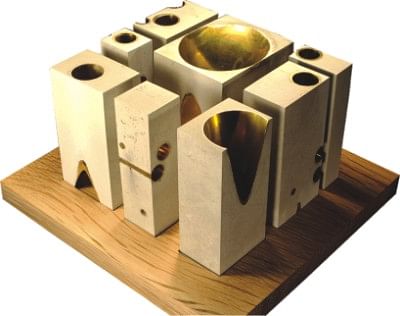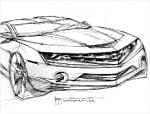BUildinGS and StuFF
By Shaer Duita Phish Reaz
We're at a point in time where almost everything we do is defined by product design. Be it while buying a car, looking at apartments, even buying such mundane things as shampoo, our every decision is dependent on the design of the product we're about to procure. Most people do it unconsciously, while some are much more design-influenced than others.
 This trend, like advancements in tech, seems to have jumped forward by light years this past decade, prompting designers of today to have a more open perspective when designing. In architecture, design has constantly undergone changes since the 18th century. One only needs to take a look at New York, the largest city in the world, to see how it has progressed. Neoclassical apartment houses sit side by side with Renaissance Revival buildings, while the most famous churches adopt a Goth style that's hard to miss. Then there's Greek revival, which is also called the national style building in the US: this style of architecture, originating in the 1820's, featured extensively in US federal and national buildings, with the most famous examples being the White House and the New York Public Library. From the 1920s to the 1950s, setback skyscrapers and art deco high risers emerged as the dominant theme in most major cities. The “wedding cake” setback style of building was more of a necessity than a design feature due to the zoning laws of New York, which stipulated that the shadows cast by skyscrapers, must be reduced.
This trend, like advancements in tech, seems to have jumped forward by light years this past decade, prompting designers of today to have a more open perspective when designing. In architecture, design has constantly undergone changes since the 18th century. One only needs to take a look at New York, the largest city in the world, to see how it has progressed. Neoclassical apartment houses sit side by side with Renaissance Revival buildings, while the most famous churches adopt a Goth style that's hard to miss. Then there's Greek revival, which is also called the national style building in the US: this style of architecture, originating in the 1820's, featured extensively in US federal and national buildings, with the most famous examples being the White House and the New York Public Library. From the 1920s to the 1950s, setback skyscrapers and art deco high risers emerged as the dominant theme in most major cities. The “wedding cake” setback style of building was more of a necessity than a design feature due to the zoning laws of New York, which stipulated that the shadows cast by skyscrapers, must be reduced.
Nowadays, architecture seems far removed from the organised, categorised themes of the past. No longer can you define what category the Dubai al Burj or the Taipei 101 falls under. There is a more general term used to categorise these: postmodernism. Postmodernist architecture can comprise anything from a WWII inspired modern skyscraper to an office building with pagoda influences. Many introduce Deconstructivism as a form of Post-modernism, but in truth, no one can actually define what exactly Deconstructivism is, much less find its roots. Traces of cubism and general deformation can be found in examples of DC like the Seattle Central Library, Copper Union's 41 Copper Square, and the famous Guggenheim Museum Bilbao in Spain. In other words, if a building looks ultra-modern and ultra-cool, and not at all grandfatherly, it's probably postmodernist or deconstuctivist. Frank Gehry, Jean Nouvel, and Norman Foster are typically labeled the masters of Postmodernist architecture.
Enough about buildings. Automobiles have almost always been bought on the basis of good design, be it aesthetic or mechanical. From the very beginning of the automobile, to the golden days of coachbuilt limos, to the mass produced technological wonders of today, vehicle design has been paramount to achieving good sales. In the early days the only manufacturer giving importance in equal measure to both engineering and body design was Ettore Bugatti and his son, Jean Bugatti. Crafting such beautiful cars as the Type 57 Atlantique and the Royale, the father son duo left a legacy that still affects the way designers think today. In the golden days Harley Earl dominated the design world of Detroit, putting out incredible concept cars and production vehicles from General Motors. This was the man who single handedly shaped the future of auto design and introduced the famous Cadillac tail fin. Elsewhere in Europe, the one-off custom design craze was in phase. Billionaires and royalty would go to prestigious design houses like Pininfarina, Bertone and Zagato to get custom bodied versions of their Ferrari's and Maserati's. Even mainstream manufacturers paid these design houses handsomely to come up with designs that would ensure success in the highly competitive markets.
 Today, vehicle design has jumped light years ahead with often-misunderstood visionaries like BMW's Chris Bangle and Pinifarina's Ken Okuyama and Jason Castriota leading the charge. No one can talk about modern auto design without mentioning Chris Bangle. He was the man responsible for bringing about the craze for flame surfacing. It wasn't long ago that designers discovered the wonders of wrap around headlights, and now here they are, only 14
years later, incorporating seemingly random cuts and angry edges into body design, everything coming together beautifully to give aggressive designs. Another new trend is to mix necessity, engineering, and design together. Cars using carbon fibre extensively for lightweight display the carbon weave proudly (Veyron SuperSport, Pagani Zonda Cinque), while others show off their exoskeleton (like the Ariel Atom.) For everything from hatchback to SUV exteriors, to hypercar and ultra-luxury interiors, good design can almost make up for mediocre quality.
Today, vehicle design has jumped light years ahead with often-misunderstood visionaries like BMW's Chris Bangle and Pinifarina's Ken Okuyama and Jason Castriota leading the charge. No one can talk about modern auto design without mentioning Chris Bangle. He was the man responsible for bringing about the craze for flame surfacing. It wasn't long ago that designers discovered the wonders of wrap around headlights, and now here they are, only 14
years later, incorporating seemingly random cuts and angry edges into body design, everything coming together beautifully to give aggressive designs. Another new trend is to mix necessity, engineering, and design together. Cars using carbon fibre extensively for lightweight display the carbon weave proudly (Veyron SuperSport, Pagani Zonda Cinque), while others show off their exoskeleton (like the Ariel Atom.) For everything from hatchback to SUV exteriors, to hypercar and ultra-luxury interiors, good design can almost make up for mediocre quality.
Is it a good thing, then? Probably not, since nothing should ever serve as an excuse for bad quality. This just means that good design is always important, along with quality control. Even if it is a tube of toothpaste, a piece of jewellery, home appliances, an apartment building, or any regularly used object, its design should reflect progress. Welcome to the age of the Designer.
This article is simply a commentary on progress of design through the ages. It serves no purpose and has no conclusion, just like any modern art piece. It only exists to annoy those who do not understand such intricate thoughts.
